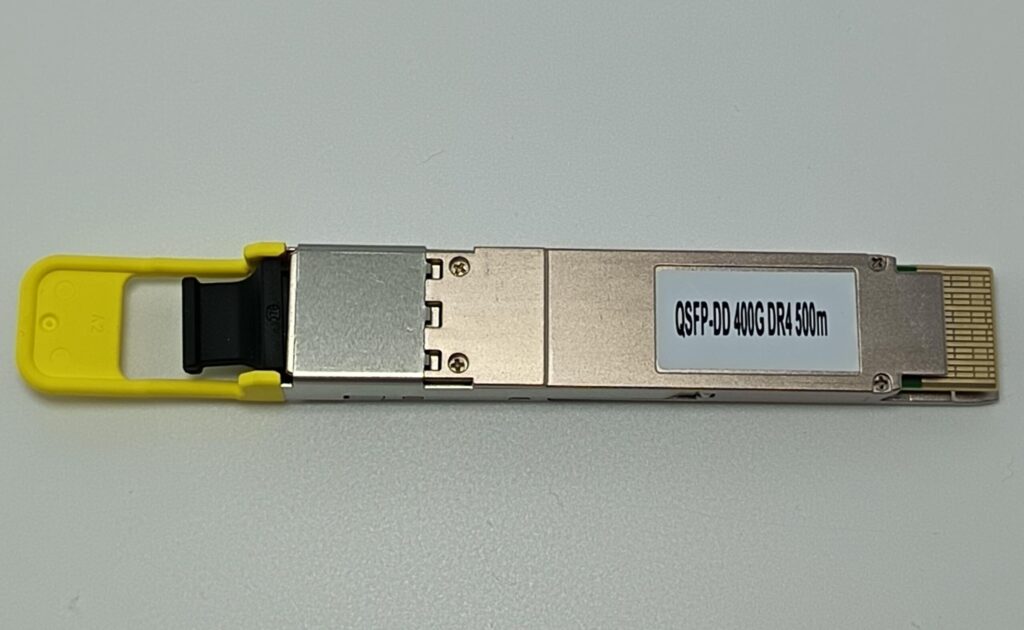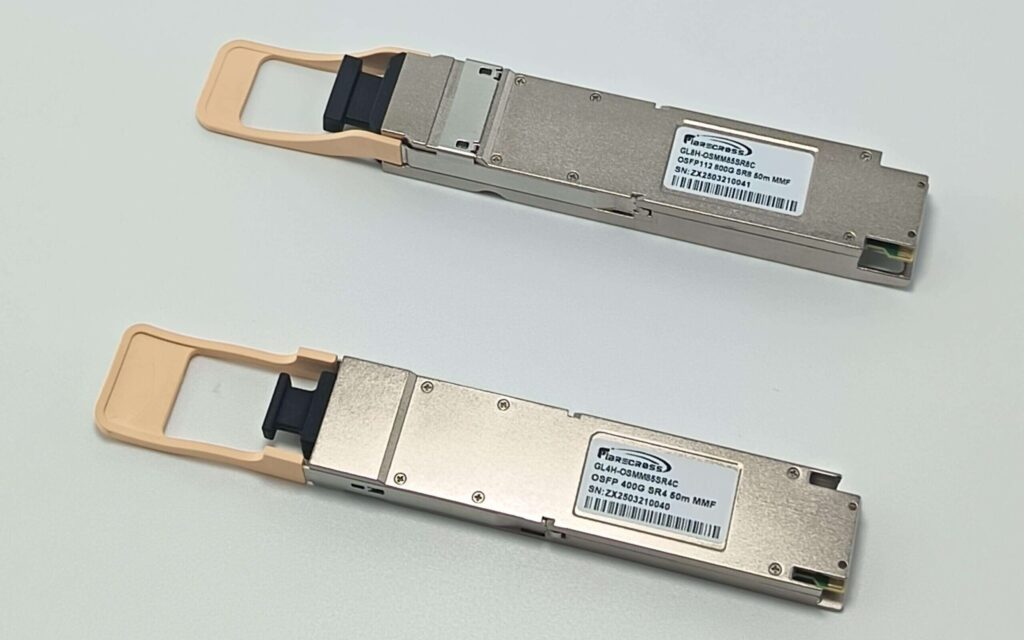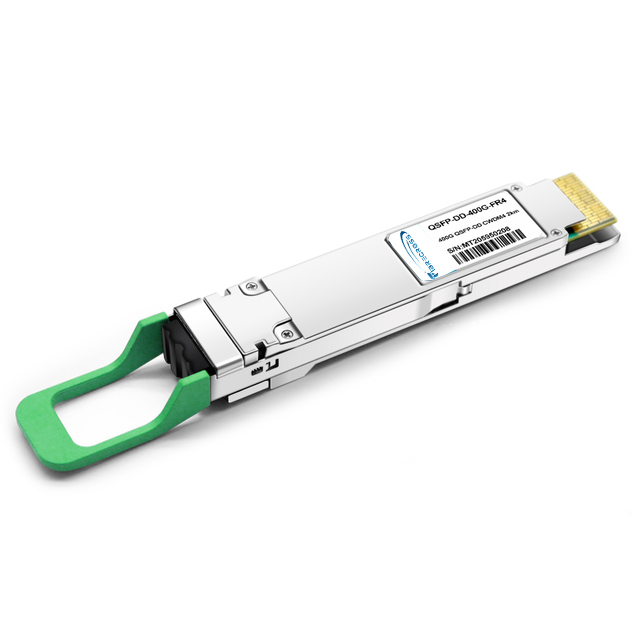An optical transceiver is an essential component in modern fiber-optic communication networks, playing a key role in high-speed data transmission. As the demand for fast and reliable internet services grows, the significance of optical transceivers in ensuring efficient data transfer has never been greater. These devices convert electrical signals into optical signals and vice versa, enabling data to be transmitted over long distances using fiber-optic cables.
What Is an Optical Transceiver?
An optical transceiver is a compact, integrated device used in fiber-optic communication networks to both transmit and receive data. It acts as the interface between the electrical and optical layers of a network, converting electrical signals into light and vice versa. Inside, the transceiver typically includes a laser transmitter, a photodiode receiver, and supporting electronic circuitry.
These modules are commonly found in data centers, telecom infrastructure, and enterprise networks—anywhere that high-speed fiber-optic links are required.
Types of Optical Transceiver
Optical transceivers vary by several key attributes:
1. Form Factor
Different designs suit different applications and equipment:
1×9 Transceivers – Early style with 9 pins (now outdated)
GBIC (Gigabit Interface Converter) – Large and hot-swappable
SFF (Small Form Factor) – Smaller design, not hot-swappable
SFP (Small Form-Factor Pluggable) – Most popular compact module
SFP+ – Enhanced version of SFP supporting 10 Gbps
SFP28 – Supports 25 Gbps, used in newer Ethernet setups
QSFP/QSFP28/QSFP56 – Quad form factors for 40G, 100G, and 200G+ applications
CFP Family (CFP, CFP2, CFP4, CFP8) – Large-capacity modules for high-speed transmission
CXP and CSFP – High-density and dual-channel formats
Legacy Modules – XENPAK, X2, XPAK (phased out in modern networks)
2. Transmission Speed
Transceivers are categorized by the data rate they support:
Low-speed (under 1 Gbps)
Standard rates: 1.25G, 10G, 25G, 40G, 100G, and up to 400G+
3. Fiber Mode
Single-Mode (SM): Uses narrow-core fiber and longer wavelengths (1310nm, 1490nm, 1550nm). Ideal for long-distance communication (up to 160km).
Multi-Mode (MM): Uses wider-core fiber and shorter wavelengths (850 nm). Suitable for short-range links (up to 2km).
4. Application-Specific
Ethernet (e.g., 10GBASE-SR, 100GBASE-LR)
Fibre Channel for storage networks (e.g., 8GFC, 16GFC)
Telecom (SONET/SDH) and Mobile Fronthaul (CPRI)
Passive Optical Networks (PON) like GPON, EPON
DWDM and CWDM wavelength-specific modules
Structure of an Optical Transceiver
A typical transceiver includes:
Latch or Tab: Locks the module into the switch or router
Transmitter: Laser diode (e.g., VCSEL, DFB, or EML) with driver
Receiver: Photodiode (PIN or APD) with amplifier
Metal Shell: Protects internal components and ensures EMI shielding
Label: Shows specifications like speed, distance, and wavelength
Dust Cap: Covers and protects the optical interface
Spring Mechanism: Ensures stable mechanical fit in ports
Applications of Optical Transceiver
These devices are used across industries:
Data Centers: For server-to-switch and switch-to-switch links
Enterprise Networks: Backbone connections over fiber
Storage Networks (SANs): High-speed Fibre Channel interconnects
Telecommunication Infrastructure: Long-haul and metro fiber links
Industrial Communication: Reliable fiber links in challenging environments
Key Parameters of Optical Transceivers
When choosing a transceiver, consider:
Data Rate: Ensure compatibility with the network standard (e.g., 10G, 100G)
Transmission Distance: Short-range (SR) or long-range (LR) options
Wavelength: Common wavelengths are 850 nm (MM), 1310/1490/1550 nm (SM)
Transmit Power: Must overcome fiber loss to reach the receiver
Receiver Sensitivity: Minimum light level the transceiver can detect reliably
Fiber Mode: Match with single-mode or multi-mode fiber types
Connector Type: LC, SC, MPO/MTP, depending on the module type
Extinction Ratio: Higher ratio means better signal clarity
Eye Diagram: Visual test of signal integrity, used in performance validation

Frequently Asked Questions About Optical Transceivers
Q1: How Do You Install an Optical Transceiver?
Installation is plug-and-play: insert the optical transceiver into a compatible port (e.g., SFP or QSFP), connect the fiber optic cable (LC or MPO connector), and power on the device. Ensure the transceiver matches the port’s data rate and fiber type, and follow manufacturer guidelines for optimal performance.
Q2: What Standards Do Optical Transceivers Comply With?
Optical transceivers comply with Multi-Source Agreements (MSAs) like SFP MSA, QSFP MSA, and QSFP-DD MSA, ensuring interoperability. They also adhere to standards such as IEEE Ethernet (e.g., 100GBASE-LR4) and ITU grids for WDM applications, guaranteeing performance across diverse networks.
Q3: Can I mix single-mode and multi-mode components?
No. They require different core sizes and wavelengths and are not compatible.
Conclusion
Optical transceivers are essential for modern networking. Whether you’re building a local network, data center infrastructure, or a telecom backbone, selecting the right type of transceiver ensures reliability, speed, and scalability. Understanding their form factors, performance metrics, and compatibility with fiber types will help you deploy high-performance, future-proof solutions.






